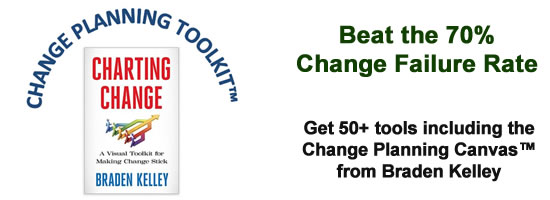Four Strategies to Being Fully Present in any given Moment

Premise:
Earlier today, I came across a blog post on The School of Life blog about the difficulty of being in the present. You can read the entire post here. It so happens that I’ve been having a conversation with my wife and son recently about the same topic (which is a slightly better way of saying that both of them don’t think I am being present in the moment when I am with them). And there are countless articles that I have read which espouse the importance of being fully present in the moment for leaders as well, so exploring this topic deeper will prove to be good for me as a husband and a father but also as a leader in my workplace.
The Struggle:
So, just today morning, I committed to my wife that I will figure out a way for me to be able to do just that. So, here I was thinking about some strategies that I can employ to be present in the moment and the blog post pops up in my feed.
So, I was super excited to read the post and was totally disappointed at what I read. It seems that our body, mind and our entire physiology works towards keeping us away from the present and either in the past or in the future. What a bummer!!!
After doing a bit more research and going down my memory lane to think about everything that I learnt while researching for my book Thrive, I realised that this is a mechanism that was required for us to survive in the evolutionary past. This still is a survival mechanism for us today.
- We need to think about what happened in the past so that we can learn from that and hopefully use that learning to survive in the future.
- We need to think about the future (meeting with your boss or customer, a difficult conversation with your wife or son or daughter, etc) in order to be prepared with strategy and information to deal with this.
This might not be a life-threatening need but nevertheless our physiology gives it the same kind of importance to this (out of habit).
So, the question that I started out to answer still remains open. What strategies can I use to be fully present in the moment? Here are some that I have figured out so far that I intend to put into practice and see which one’s work and which one’s don’t.
Strategy 1: Recreate the Cinema Hall experience:
When I think of moments in life when I am fully present, consistently, is when I am watching a gripping movie. I am fully immersed in the story and enjoy the movie by fully engaging with the story, which means that I don’t lack the ability to be fully present. I just need the right environment and the attitude to be able to do so. Also, when I am watching a movie in a cinema hall, I am not constantly checking my phone or reading something or doing anything else at all. The only focus is the movie running in front of me on the big screen. The theatrics and the fast pace of story being told also helps. What also helps is that we are using at least three out of the five senses we have (sight, sound and touch – there is a reason the temperature of the theatre is kept at such a low level) and at most four senses (if you include a taste – the popcorn and cola) as well.
So, the first strategy to be followed is as below:
- Do only one thing – be present. Put the phone on silent mode. Put the book or notebook away.
- Engage as many senses as possible. In most cases, it will be sight and sound. Be creative and find out other ways to include other senses (maybe you can include a sense of touch or smell by introducing a room freshener or keeping something at hand, maybe a stress ball or a glass of hot water, tea or coffee.
- Control the environment if possible. Keep the temperature a bit colder or hotter than what you are comfortable with. Include some form of sensory inputs (as said above).
- There is a reason that most movies are around between 90 -100 mins long. That is probably the stretch of time that you can be fully immersed in the present. The movie needs to be extra-ordinarily moving if it is longer or you need a break around the 70-75 minute moment. So, don’t plan for anything where you are expected to be fully present for more than 90 mins. If needed, take a 10-15 mins break. Go for a walk, ideally in the nature. Drink some water or tea or coffee. Take a bio break. Do something mundane before coming back to being fully present.
Strategy 2: Play a game of Improv:
There are times when we know that there is clear time limit to the time you have with your son or wife or anyone else at work. For example, I know that my son has to leave for his school in 15 mins or that I need to leave for office in the next 30 mins.
In scenarios like this, when I don’t need to spend a long time being fully present in the moment and just need to do so for a short period of time, I will tell myself and thereby to my mind that I am playing a game of improv, which requires complete immersion in the moment so that I can respond to whatever stimuli I get in that moment. I will use the principles of improvisational theatre to help me be fully present in those moments that I have with my family (or for that matter, my customers, partners or colleagues).
This is a great strategy for impromptu meetings where you have not had the time to prepare the environment and yourself to be fully present.
Strategy 3: All is well
In the movie, 3 Idiots, the protagonist character shares a story, which I remember very vividly. The story goes something like this:
In a small society, there was a watchman who was hired to guard the society. Every night, he would walk all around the society and keep calling out “All Is Well†loudly. This used to give a lot of confidence of safety and security to the people living in the society and they would sleep in peace knowing fully well that they are being protected by the security guard. The loud chanting of “All is Well†helped them with their peace of mind. Then one day, there was a theft in the society. When they started making enquiries about the thief and spoke to the security guard, they found out that he was night blind and could not see a soul in the evening. He survived and allowed everyone to be at peace by his chant of “All is wellâ€.
Moral of the story is that our mind is a very complicated thing and can get easily distracted and typically fears for the worst, in any given scenario (in general). So, in order to stay happy and at peace, we need to calm this thing by continuously telling it that “All is Wellâ€.
We need to trick our mind in thinking that all is well, rather than reason with it. And it turns out that it is easy to trick our minds, easier than tricking anyone else. This exact strategy can also be used to trick our minds in being fully present in the moment.
At a regular interval, keep telling ourselves – “All is Wellâ€
Strategy 4: Checking in with my Talisman
I really believe that our ancestors were way smarter than we are when it comes to life wisdom. They thought about life, living and dying well much more deeply than we ever do. So, I thought I can borrow one of the strategies from that our ancestors used to deploy a lot, that we discount quickly as nothing but a form of superstition.
I am talking about having my very personal talisman which will help me stay in the present moment. All the three strategies that I have listed above quickly help me root myself in the present moment but are not really great at keeping me rooted in the present. This is where my talisman comes into picture.
The key here is to fully believe that the talisman will give me the power to stay rooted in the moment. The power of the talisman is equal to the strength of my belief in the talisman. This is another way for us to hack our physiology to allow us to by-pass all the challenges that it throws our way to distract us from being present in the moment. The other thing that is critical here is to create a habit of checking in with my talisman on a regular basis throughout the day.
Just like you need to have dig a well much before you need drinking water, you need to have practiced with your talisman much before you really need it to work. So, I am planning to set up an alarm on my laptop or phone to ping me once every 90 minutes. Every time the alarm goes off, I will check-in with my talisman and ground myself to the present moment.
The Talisman could be anything – ring in your finger, chain in your neck, a bracelet or a stress ball on your table or a picture frame of your family on your desk.
This is a five-step process:
Step 1: Touch and feel the presence of the talisman
Step 2: Take 5 deep breaths
Step 3: Name the feeling you are feeling (Happy, frustrated, sad, energetic, etc)
Step 4: Take 3 more deep breaths
Step 5: Ask the talisman to help you come back to the present moment
I know that this sounds extremely stupid thing to do, but I also believe that this is a good way to build the habit and trick my physiology at the same time.
The beauty is when I am with my family and my mind starts to get distracted, all I need to do is to touch and feel my talisman and the entire habit will kick off and I can come back to the present moment (assuming that I have built up this habit successfully).
In conclusion:
In all my research, I have found that the biggest enemy in our being fully present in the moment is US and our physiology. We are not built to be fully present in the moment. So, in order for us to fully experience the present moment, we need to find a practice that can help us circumvent our physiology first. The four strategies that I have listed here are my way of trying to do this.
Do you agree with my strategies? Do you have any strategy that you think works really well for you? Please do share them here so that I can learn you’re your experience and experiment those strategies as well. After all, this has been the biggest differentiator between us humans and all the other species around us. So, let’s put that to use!
A version of this post was originally published on “Musings of a Neo-Generalist” and has been republished here with authors consent.
Image by Ðлина ОÑипова from Pixabay
Wait! Before you go…
Choose how you want the latest innovation content delivered to you:
- Daily — RSS Feed — Email — Twitter — Facebook — Linkedin Today
- Weekly — Email Newsletter — Free Magazine — Linkedin Group
 Mukesh Gupta is Director of Customer Advocacy, SAP India Private Limited. He also served as Executive Liaison for the SAP User group in India, and as a Global Lead in Sales & Business Development. He blogs, and shares podcasts and videos, on his site rmukeshgupta.com
Mukesh Gupta is Director of Customer Advocacy, SAP India Private Limited. He also served as Executive Liaison for the SAP User group in India, and as a Global Lead in Sales & Business Development. He blogs, and shares podcasts and videos, on his site rmukeshgupta.com
NEVER MISS ANOTHER NEWSLETTER!
LATEST BLOGS
The Importance of Packaging
Let’s talk about packaging. Packaging can be thought about in many different ways, but if we think purely about the purpose of packaging first, we find the purpose is to: contain the product, communicate product information, …
Read MoreWhy the World Cup is a Big Deal
After living overseas in Germany and England and now coming back to the United States, I have a completely different perspective on Football (or Soccer as we call it in the United States). With the World Cup in full swing, I thought I would tackle the subject of Football and why it is the most popular sport in the world.
Read More


